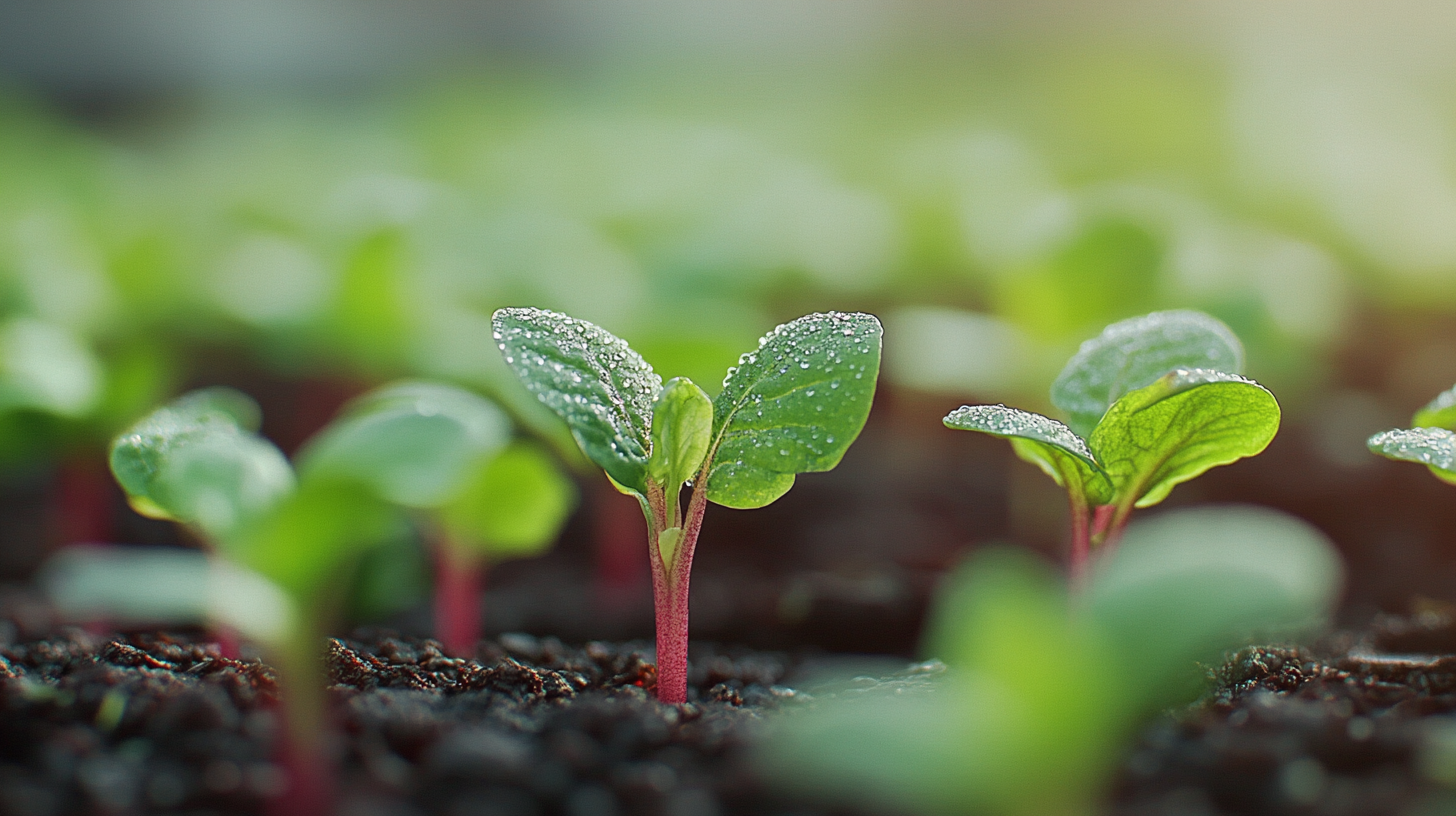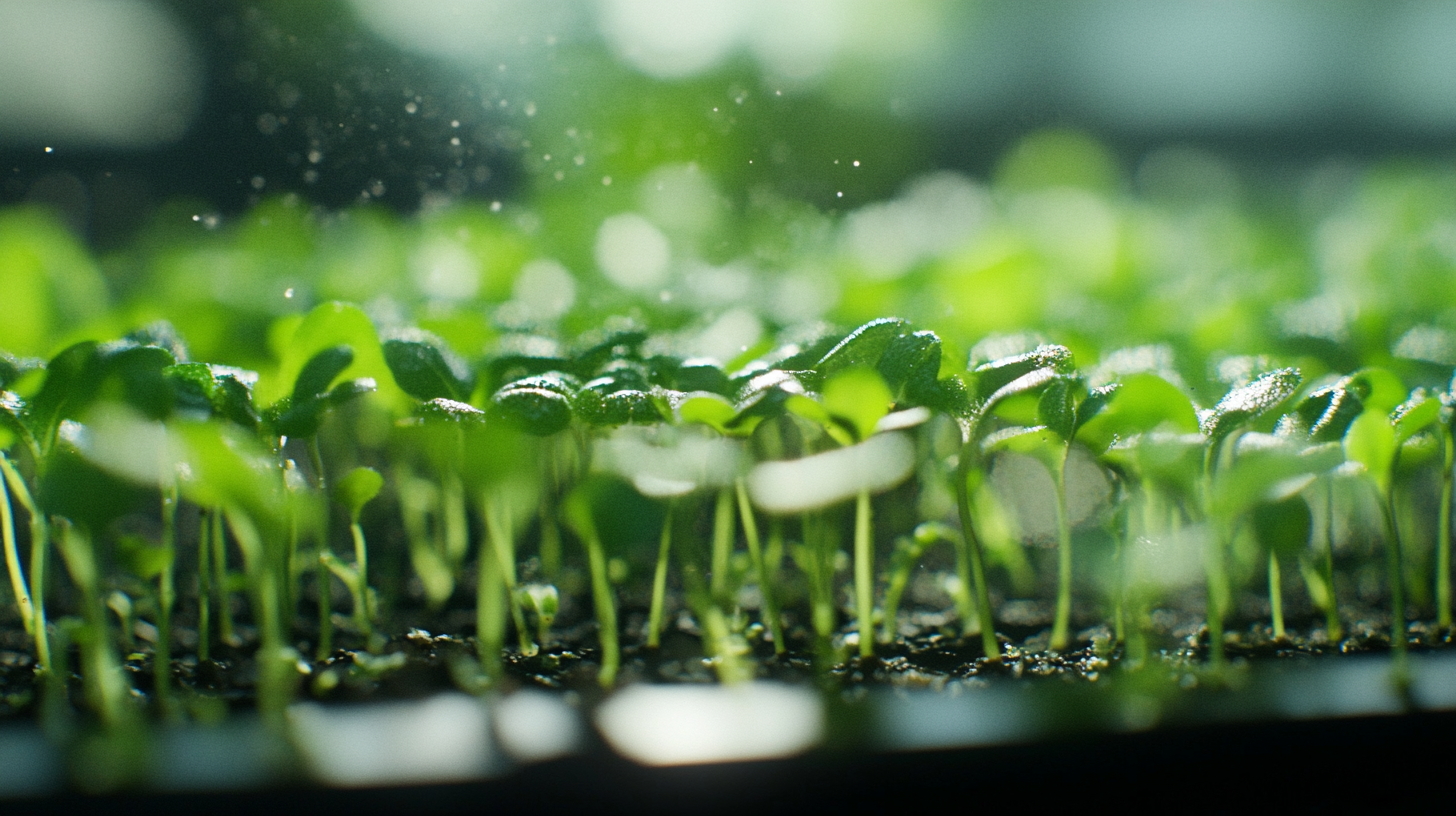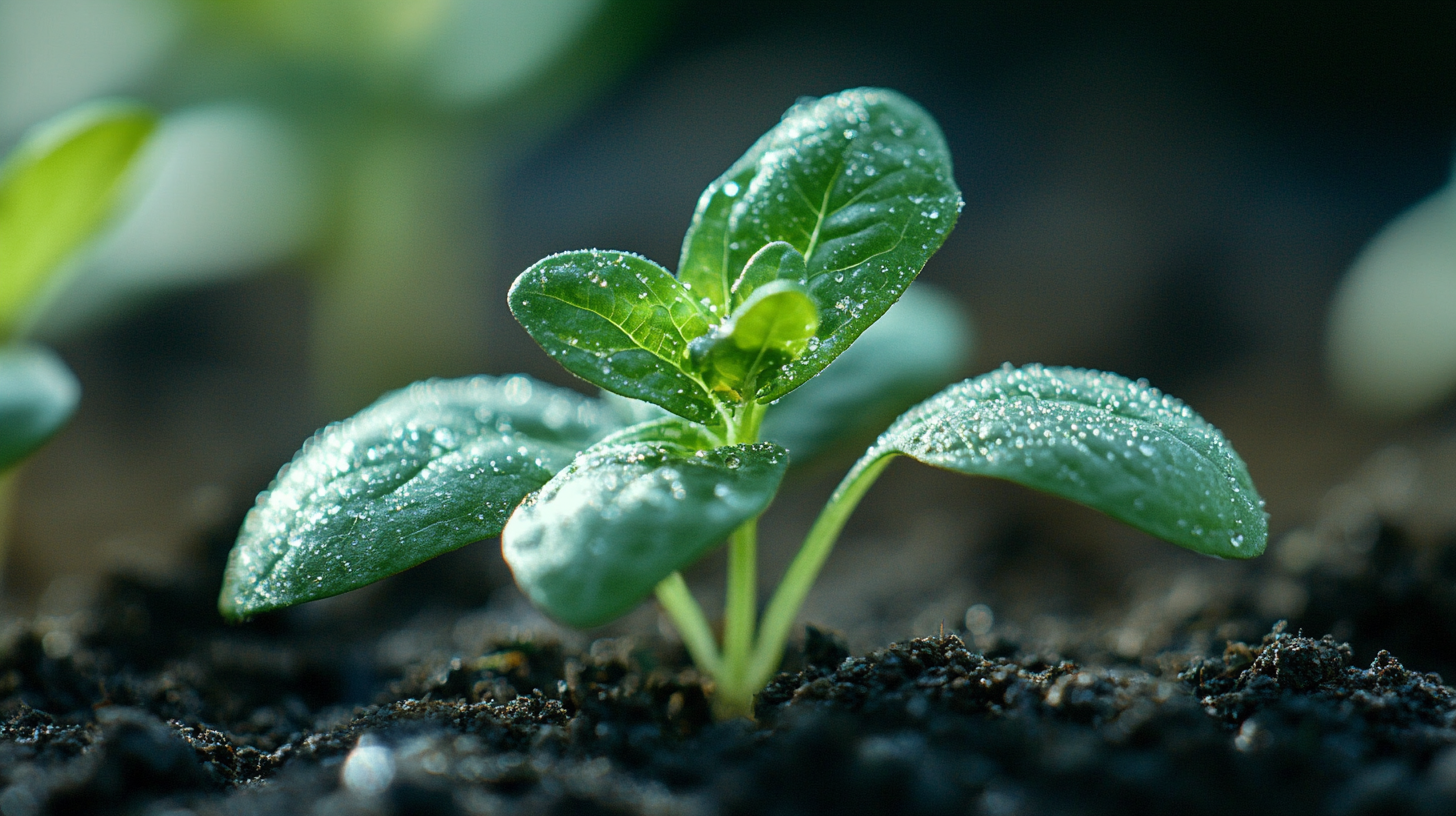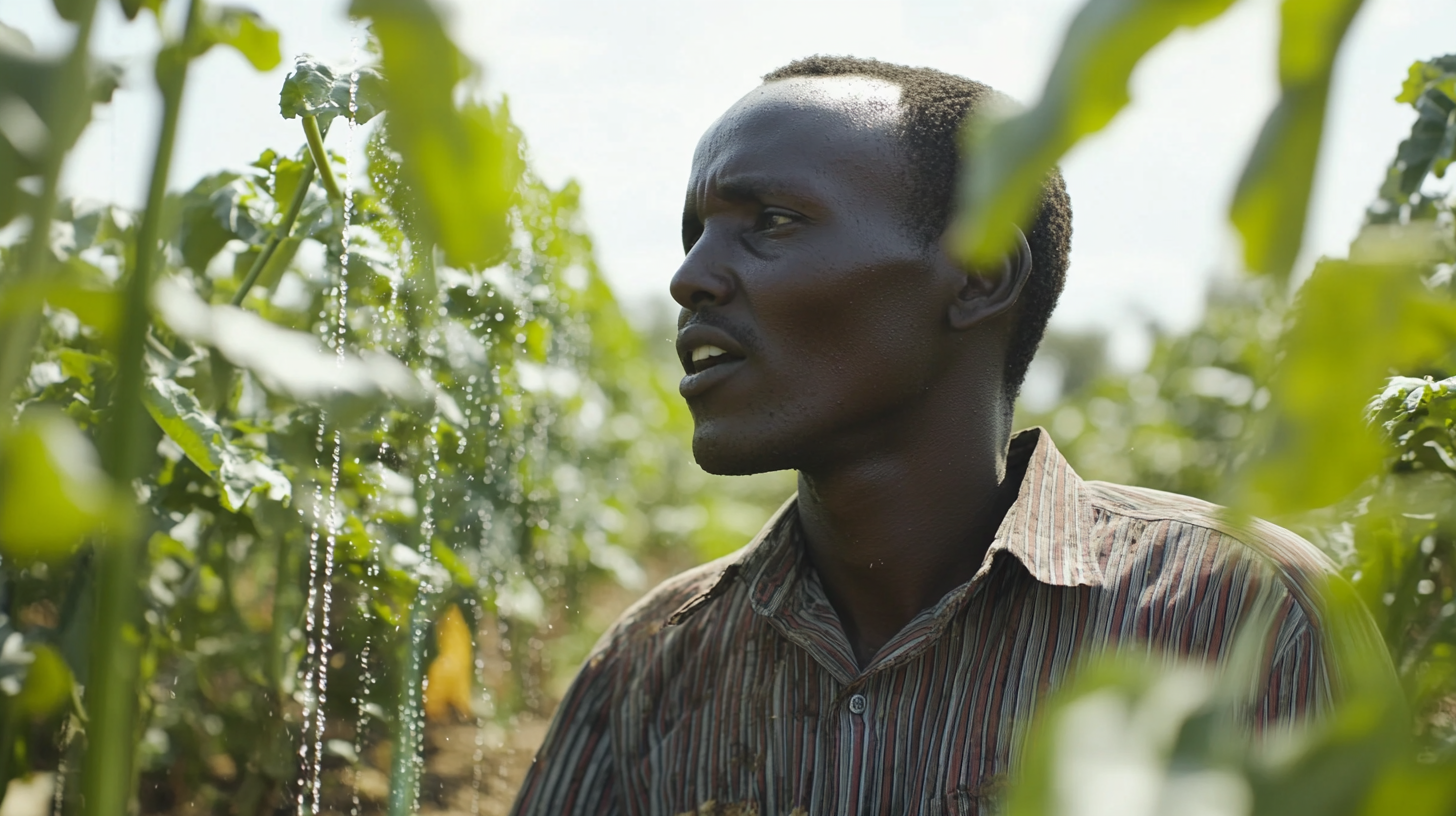Micro Drip Irrigation has become an increasingly important part of the efforts to maximize agricultural productivity and promote the more sustainable use of resources. The Food and Agriculture Organization (FAO) reports that about 70% of the world's freshwater resources are used for agriculture; thus, any system that optimizes the use of this water is crucial for sustainment. Micro Drip Irrigation systems were therefore designed to transport water straight to the root zone of the plant, minimizing wastage and maximizing crop yields. This method is being progressively adopted around the world, and with market expectations of a CAGR of 11.3% between 2021 and 2028, there is gradual awareness of water scarcity and efficient agriculture.
Though it has a host of advantages, today micro drip buyers worldwide grapple with numerous challenges in selecting and installing Micro Drip Irrigation. Various challenges arise and include soil types, uneven topography, and regional climate differences which tend to complicate the design and implementation of such systems. The disparity in the availability of quality products and service support across markets provides further challenges in navigation for buyers in an already fragmented landscape. As farmers and agribusinesses increasingly consider micro irrigation as a sustainable solution, grappling with these impediments will be key to the successful adoption and accordingly appropriate water management strategies.

Micro drip irrigation technology has made tremendous advancements in recent years and can now offer solutions to farmers all over the world. The developments of micro drip systems are answering these challenges that traditional irrigation systems had posed, as the demands to produce food more sustainably and efficiently increase. These innovations also help reduce water consumption while improving crop yield by providing the right amount of water applied directly to the plant roots. At present, a new wave of more advanced micro drip irrigation systems is being implemented globally in agriculture. Advanced sensor technologies and automation will change farmers' perspectives in managing the water they take care of. Using advanced smart systems to monitor soil moisture and climatic conditions can easily plan irrigation schemes, ensuring plants are provided with adequate water while reducing wastage. This is most beneficial for countries facing acute shortages of water, as every drop matters. In Africa, micro-drip irrigation has the potential to unleash large amounts of agricultural productivity. New efficient irrigation techniques would let Africa take another important step in solidifying its position as a unique global food producer and contributor to food security in the world. It could literally make a history of farming for African farmers by improving their production levels and enhancing the utilization of the vast unutilized areas of farmland. The adoption of this kind of technology goes beyond empowering farmers: it moves closer toward sustainable agriculture at a global level.

The global buyer of micro drip irrigation systems is facing numerous challenges that affect their purchase decision; one of the most pressing concerns is the lack of uniform quality standards among manufacturers and regions. Buyers are stricter on quality since they mistrust products not bearing any certification. Thus, inconsistent product quality could incur higher operational costs and/or poor agricultural practices.
Another drawback is the complexity of supply chains regarding micro drip systems. Many buyers delay in the last minutes owing to logistics-related challenges, such as transport and customs regulations disrupting timely access to critical irrigation components. Besides, off and on fluctuations of material prices and availability complicate the budgeting process and bring unexpected costs to buyers already committed to an effective irrigation solution.
Lastly, clients might find it difficult to sift through endless options in the market. With various technologies, features, and configurations, it becomes a near-suicidal act to choose the right one for specific agriculture needs. The choice of systems requires quite a substantial amount of time for research and consultation to guarantee that one is choosing systems suitable for one's operational goals and in consideration of local environmental conditions. This means not only understanding product capabilities but also the local field agricultural systems and water-management strategies.

Micro drip irrigation has become the frontline answer to increasing agricultural productivity in areas prone to water scarcity. However, worldwide buyers face myriad problems concerning the quality and dependability of such systems. With the growing demand for such methods of irrigation, buyers have to struggle through a complicated market, where inferior items can undermine agricultural projects.
One key aspect is the variation in product quality from numerous manufacturers regarding micro-drip irrigation goods. Buyers are usually faced with varying durable, performing-related functions from nonstandard micro-drip products. Such variations can lead to malfunctions, plus rising maintenance costs, and eventually reduced output. Buyers should thus be cautious when examining manufacturers to identify reliable certifications and customer reviews that testify to their products' performance and longevity.
The technology incorporated into the systems brings opportunities and challenges. Advanced design features such as the inclusion of automation and data monitoring can significantly improve efficiency in irrigation. However, reliability greatly varies among these technologies. Hence, beyond the short-term benefits, the buyer must consider such a system's long-term reliability. So countries like those in Africa, which are striving to maximize their cultivation potential, should ensure that they invest in high-quality micro drip irrigation products for sustainable growth.
Section 2.3- The Role of Micro Irrigation in Drought Prevention :. Micro Drip Irrigation as Major Driving Intervention for Agricultural Productivity in Water Stress Areas. It is a very useful area of agriculture to enhance productivity in all parts of the world, particularly in areas with high water deficiency. However, they keep coming across a maze of problems concerning their systems, where they can buy the product, and how reliable these systems are, among many others.
Quality inconsistency is one of the major concerns. There are manifold manufacturers offering micro drip irrigation solutions; customers usually get conflicting durability and performance. This leads to operational failures, increment in maintenance costs, and finally, diminished yields. Hence, the buyer becomes careful while evaluating a manufacturer, looking for trustworthy certifications and customer feedbacks testifying to the performance and longevity of their products.
Besides, this technology invited opportunities and challenges. Advances in automated designs and data monitoring can vastly improve irrigation efficiency. But, dissimilar reliability is at stake. A buyer, therefore, has to look into the short-term gains as well as the long-term reliability of such sophisticated systems. Countries like those in Africa, trying to squeeze the most out of their agriculture, should ensure they put their money in high-quality micro-drip irrigation products for sustainable growth
Section-2.3: The contribution of micro-irrigation systems in combating drought tension: Major thrust areas a driving intervention for agricultural production in water stress areas such as micro drip irrigation. It is a good area of agriculture and improvement in productivity in all parts of the world, especially in regions suffering from heavy water deficiency. However, they don't garner battles with mazes of problems related to systems, product sources, reliability of these systems, and many more.
One of the prominent concerns is differences in product quality. There are manifold manufacturers offering micro drip irrigation solutions; customers usually get conflicting durability and performance. This leads to operational failures, increment in maintenance costs, and finally diminishment where all of these culminate into poor yields. Hence, the buyer becomes careful while evaluating a manufacturer, looking for trustworthy certifications and customer feedbacks testifying to the product's performance and longevity.
Apart from that, this assures new technology brings about opportunities and challenges. Advanced automated designs with data monitoring can greatly enhance efficiency in irrigation. But, different reliability is at stake. Hence, in addition to short-term benefits, the buyer must consider the long-term reliability of such a sophisticated system. So countries like those in Africa that are trying to squeeze the very best out of their agriculture should take care to invest in high-quality micro drip irrigation products for sustainable growth.

Buyers on a global scale have seen increasing complexity in the establishment of regulatory and compliance provisions concerning micro drip irrigation systems. Differently-sized and designed, markets present their own challenges, which may impede the uptake of this technology for agriculture. A study by the Food and Agricultural Organization (FAO) estimates that close to half of the world's population is affected by water scarcity, with resultant increased demand for the efficient irrigation technologies such as micro drip systems. Compliance with local regulations limiting market entry presents a challenge, as varied regions may have their own pertinent legislation controlling the usage of water, agricultural practices, and environmental protection.
Water resources management must be assessed in light of the EU Water Framework Directive, which influences the marketing and use of micro drip irrigation systems in Europe. About 60% of farmers in the EU are not aware of regulations governing water use in agriculture, as stated by the European Commission. That can lead to infringements on compliance regulation and prospective penalties. Global suppliers need to undertake rigorous compliance documentation and train local farmers in this regard.
Likewise, in the case of North America, buyers face issues related to regulatory requirements at the state level. New sustainable farming standards coupled with technological innovation require manufacturers to be responsive to these changes. According to the National Irrigation Association (NIA), regulatory divergences create a marketplace for providers that remain abreast of and compliant with regulatory changes. Thus, understanding and navigating these regulatory hurdles while ensuring product compliance would be of prime importance for global buyers seeking to cement market access for micro drip irrigation.
As if that isn't enough, the micro drip irrigation industry has witnessed unprecedented upheaval due to unusual supply chain disruptions. With micro irrigation having a global market expected to be worth $9.5 billion by 2026 with a CAGR of 9.2%, these disruptions can stall growth or hold back innovation. The supply chain is said to be experiencing several ripples due to raw material shortages, transportation delays, and geopolitical frictions. For example, availability for polyethylene and other critical materials for drip systems has been erratic, affecting production schedules.
In these uncertain times, it is important that buyers put in place a number of strategic ideas. Strong alliances with several suppliers could increase flexibility and ensure access to critical materials. Investing in local manufacturing limits risksassociated with international shipping and tariffs to that extent. In a recent industry survey, 56 percent of businesses expressed intent to implement reshoring initiatives for their production in order to manage supply chain vulnerabilities and diminish lead times.
In addition, technology like real-time data analytics can help firms analyze market trends and anticipate disruptions in the future. Then there is predictive analytics used to assist in stockholding and procurement strategies. It is imperative that all stakeholders remain dynamic and responsive to face-time market changes to sustain their businesses and meet the demand for efficient irrigation solutions. As this sector evolves, it is also important for buyers to strengthen their strategic toolkit in order to meet the challenges thrown up by the fast-changing paradigm of micro drip irrigation.
Micro drip irrigation technology delivers precise amounts of water directly to plant roots, enhancing crop yields and reducing water consumption.
Automation in micro drip irrigation helps farmers monitor soil moisture levels and weather patterns, optimizing irrigation schedules to minimize water waste and ensure crops receive the necessary hydration.
Micro drip irrigation is crucial in water-scarce regions as it allows for precision watering, ensuring that every drop counts and improving agricultural productivity.
Buyers often encounter issues with product quality and reliability, as there can be significant variations in durability and performance among different manufacturers.
Buyers should look for reliable certifications, customer reviews, and testimonials that attest to the performance and longevity of the irrigation products they consider.
Advanced technologies in micro drip systems can improve irrigation efficiency through automation and data monitoring, but their reliability can vary, requiring careful evaluation by buyers.
Micro drip irrigation is enhancing agricultural productivity in Africa, enabling farmers to utilize arable land effectively and contribute to global food security.
By minimizing water waste and increasing crop yields, micro drip irrigation supports sustainable agriculture practices, ensuring efficient resource use and environmental conservation.
Buyers need to evaluate the immediate benefits of advanced technologies while also considering their long-term reliability and dependability in irrigation systems.
By adopting advanced micro drip irrigation solutions, farmers can optimize water usage, enhance crop yields, and better adapt to changing environmental conditions.